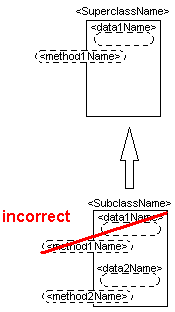| Classes are diagrammed as rectangles with square corners. The
name of the class is written immediately above the rectangle. |
 |
|
| Objects are usually diagrammed as rectangles with rounded
corners. The name of the class to which is belongs is written on the
inside of the rectangle at the top. The name of the actual object
itself is written immediately above the rectangle. |
 |
|
| Objects can also be diagrammed so that the name of the actual object
itself is written by a box with an arrow that points towards to the rectangle. |
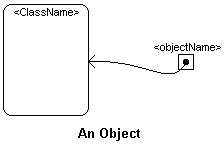 |
|
| The instanceof relation between a class and an object is drawn
as a dotted line between the class and the object that is an instance
of that class. |
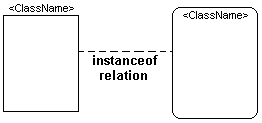 |
|
| The has a relation between objects is drawn with a pointing
arrow from a box inside an object to the object that is has in it. |
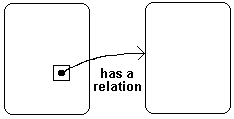 |
|
| The is a inheritance relation between two classes is drawn
as a skinny hollow arrow from the child class to its parent class |
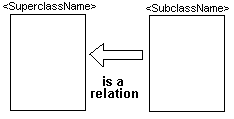 |
|














